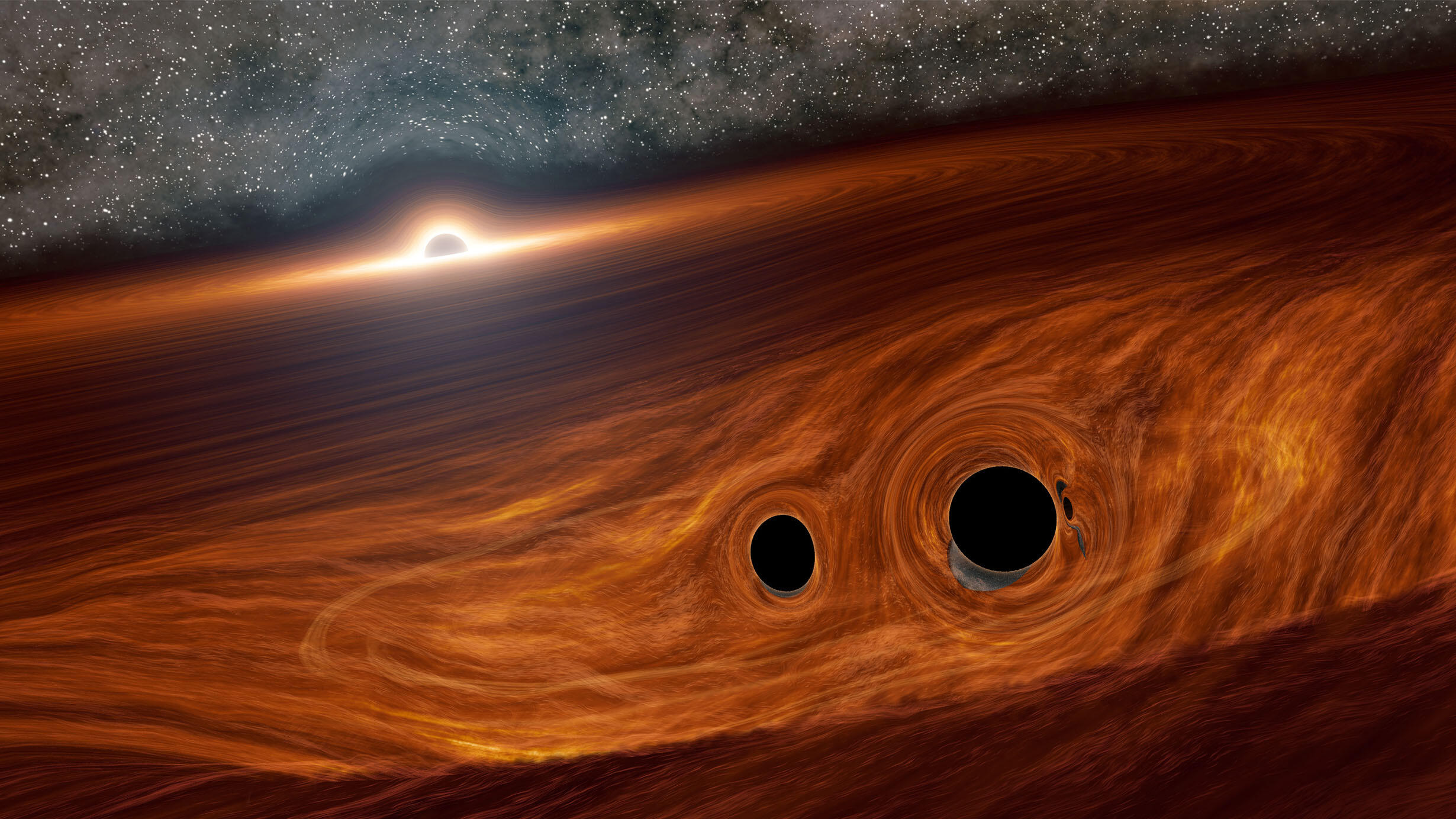 Artist's concept of a supermassive black hole and its surrounding disk of gas shows two smaller black holes embedded within the disk, orbiting one another.
Artist's concept of a supermassive black hole and its surrounding disk of gas shows two smaller black holes embedded within the disk, orbiting one another.It’s long been assumed that nothing can escape from a black hole—a dead star with an extremely strong gravitational pull. Or can it?
A new study, based on a theory developed by Museum astronomers, describes what might be the first light ever detected from a black hole merger.
When two black holes spiral around each other and ultimately collide, they send out ripples in space and time called gravitational waves. Because black holes do not give off light, these events are not expected to shine with any light waves, or electromagnetic radiation.
But a theory developed by Saavik Ford and Barry McKernan, both research associates in the Museum’s Department of Astrophysics as well as professors at the Borough of Manhattan Community College, CUNY, and faculty members at CUNY’s Graduate Center, describes ways in which a collision of two black holes might explode with light. A new study released today in the journal Physical Review Letters describes observations made by Caltech’s Zwicky Transient Facility (ZTF), the Laser Interferometer Gravitational-wave Observatory (LIGO), and the European Virgo detector that back up the theoretical simulations.
How do two merging black holes erupt with light? In this case, two partner black holes were nestled within a disk surrounding a much larger black hole.
“At the center of most galaxies lurks a supermassive black hole. It's surrounded by a swarm of stars and dead stars, including black holes,” Ford said. “These objects swarm like angry bees around the monstrous queen bee at the center. They can briefly find gravitational partners and pair up but usually lose their partners quickly to the mad dance. But in a supermassive black hole’s disk, the flowing gas converts the mosh pit of the swarm to a classical minuet, organizing the black holes so they can pair up.”
Once the black holes merge, the new, now-larger black hole experiences a kick that sends it off in a random direction, and it plows through the gas in the disk. “It is the reaction of the gas to this speeding bullet that creates a bright flare, visible with telescopes,” McKernan said.
Such a flare is predicted to begin days to weeks after the initial splash of gravitational waves produced during the merger. The gravitational waves from these colliding black holes were flagged by LIGO and Virgo in May 2019, and when scientists went back and looked through archival ZTF images months later, they found a signal that started days after the gravitational-wave event.
The scientists attempted to get a more detailed look at the light of the supermassive black hole, but the flare had already faded. However, they were able to largely rule out other possible causes for the observed flare. In addition, they looked at the behavior of the supermassive black hole over the last 15 years, finding it was relatively normal until May 2019, when it suddenly intensified. This means it is unlikely that the flare came from the usual rumblings of the black hole.
The newly formed black hole should cause another flare in the next few years, which will give the researchers another opportunity to observe this unusual phenomenon.